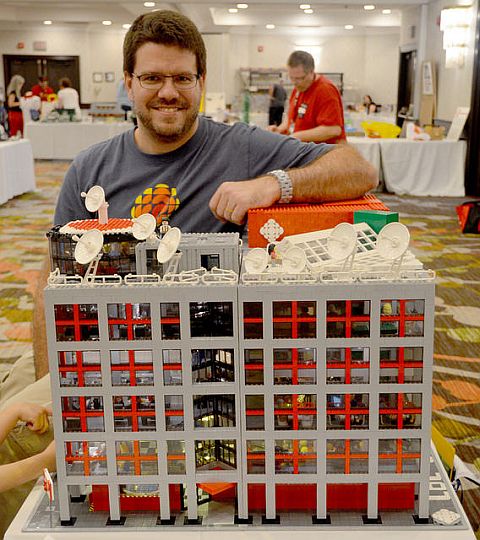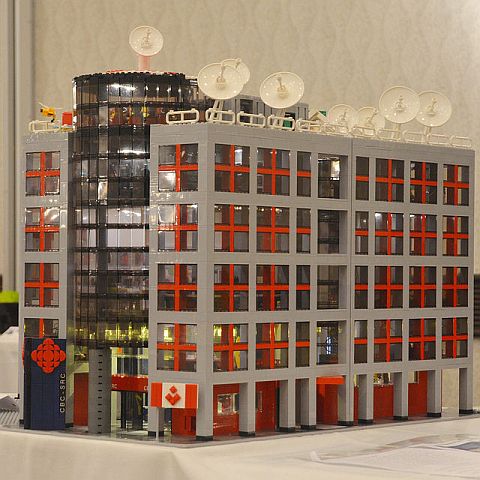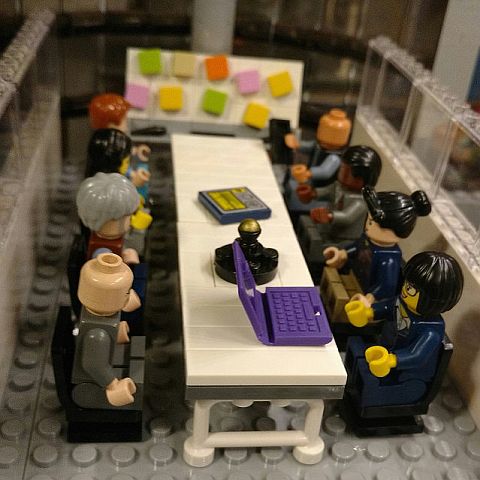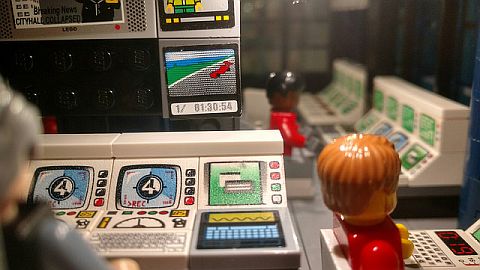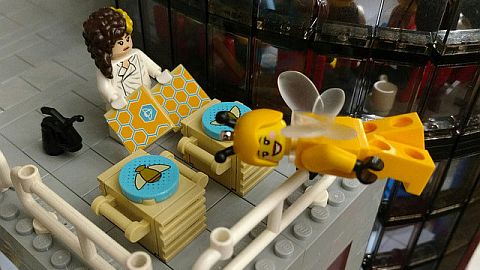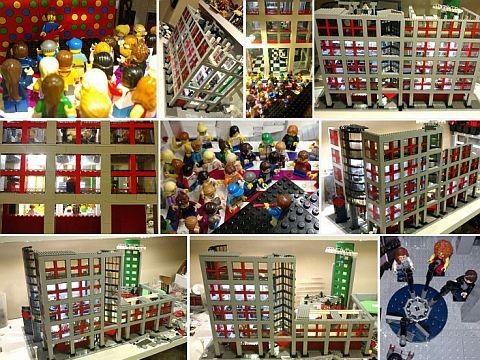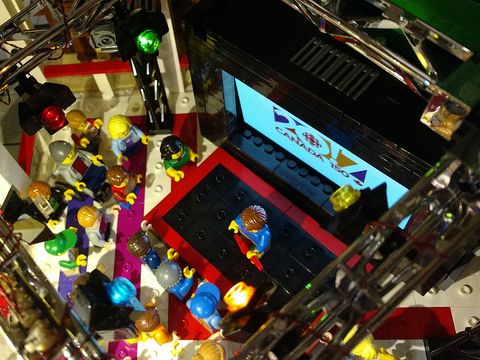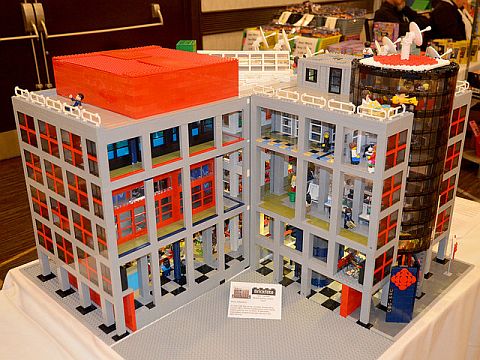Just a quick reminder that the #10258 LEGO Creator London Bus is now available for LEGO VIP members (regular release will be at the beginning of August). We have talked about the set before (see: LEGO Creator London Bus Press-Release), but I added some of the basic description and other details here again for your convenience. You can find more info on the set’s page at the Online LEGO Shop. Enjoy this iconic vehicle! 🙂
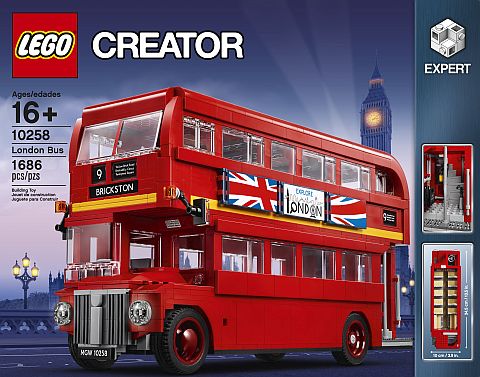
Here is the official description of the set: Take a nostalgic journey with this LEGO Creator Expert replica of the world-famous double-decker London Bus. Grab the hand pole and step onto the open rear boarding deck, complete with a used ticket bin and fire extinguisher. Then take the half-spiral staircase to the sightseeing deck where you’ll find a cozy seating area and a number of other items, including a forgotten umbrella, newspaper, empty beverage can and even discarded chewing gum stuck under a slightly-worn seat. Slide the door to access the driver’s cab with panoramic windscreen, lift the hood to reveal the engine, remove the roof and upper deck to access the interior, and choose your favorite decade with the reversible transit-advertising posters, featuring a 1950s or present-day London promotion. From the distinctive lines and curves of its bright-red bodywork, to its specially made standard-tread tires and destination sign, this beautifully crafted model oozes authenticity and intricate details that capture the character and charm of a celebrated London icon! 1,686 pieces. Price: $139.99 – BUY HERE
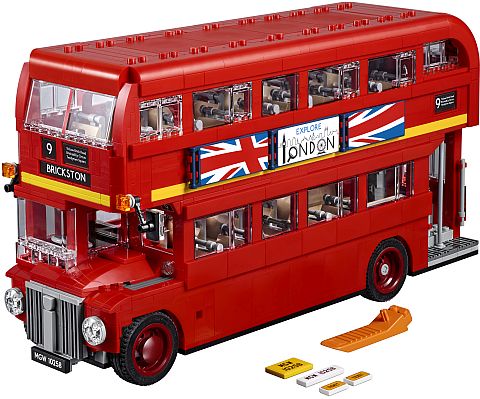
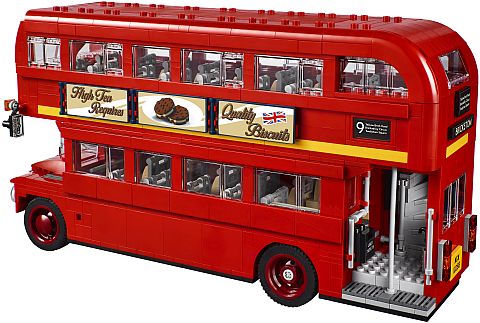
- The London Bus comes with an array of brick-built features and details, including large windows, bright red curved bodywork, panoramic windshield, reversible transit advertising posters provided as printed labels, specially made standard-tread tires and a destination sign. It also has an opening hood with engine, detailed driver’s cab with sliding door, and a removable roof and upper deck for access to the detailed interior.
- Interior details include worn look seating, open rear boarding deck with a hand pole, ticket bin, fire extinguisher and a half-spiral staircase that leads to the sightseeing deck. Additional authentic detailing includes a forgotten umbrella, newspaper, empty beverage can and discarded chewing gum elements.
- Choose your favorite decade with the miniature, reversible transit advertising posters, featuring a 1950s or present day London promotion.
- Remove the roof and upper deck for full access to the detailed interior.
- Slide open the driver’s door to access the detailed cab with panoramic windscreen.
- Lift the hood to access the engine.
- Special elements include a new-for-August-2017 tire with standard tread, quarter bows and arches in red, and 1x1x1 A2/3 bricks with vertical studs.
- This model is scaled for shelf display alongside other models in the LEGO Creator Expert vehicle series.
- Measures over 7” (18cm) high, 13” (34cm) long and 5” (13cm) wide.
And below is the designer-video, with LEGO Creator Senior Designer Morten Graff-Wang explaining the features of the set. I have also added a couple of other videos showing some more details.
The LEGO Creator London Bus is an excellent addition to the other LEGO Creator Expert vehicles like, the #10220 LEGO Creator Volkswagen T1 Camper, the #10242 LEGO Creator MINI Cooper, the #10248 LEGO Creator Ferrari F40, and the #10252 LEGO Creator Volkswagen Beetle. You can find it under the LEGO Creator section of the Online LEGO Shop.


What do you think? How do you like the LEGO Creator London Bus? Are you planning to get it? Do you have any of the other LEGO Creator Expert vehicles? Which one is your favorite so far? Feel free to share your thoughts and discuss in the comment section below! 😉
And you might also like to check out the following related posts:



